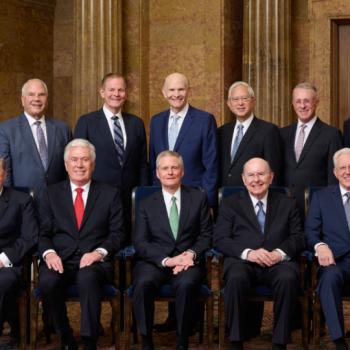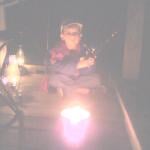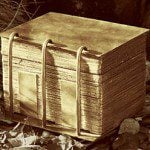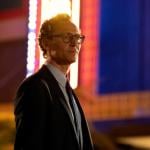
More than any other kind of landscape on earth, Alpine scenery such as this (during any season of the year) strikes me as a virtually perfect foretaste of heaven. Moreover, and as I wrote here on Sunday (see “This single truth”), although I know better than most that the original Christmas in Bethlehem didn’t look much like Austria, this is what I think of when I sing or hear German-language carols.
But, first, here are three items that went up today on the website of the Interpreter Foundation:
Nibley Lectures: Time Vindicates the Prophets — Prophets and Reformers
Between 7 March 1954 and 17 October 1954, Hugh Nibley delivered a series of thirty weekly lectures on KSL Radio that were also published as pamphlets. The series, which was called “Time Vindicates the Prophets,” was given in answer to those who were challenging the right of members of the Church of Jesus Christ of Latter-day Saints to call themselves Christians.
This lecture talks about Hebrews 6:4, 6. It suggests that it is possible for men to be gifted with everything only to later lose everything; then, it is not possible for them to regain those blessings by their own works.
The Interpreter Radio Roundtable for Come, Follow Me Old Testament Lesson 52, “We Have Waited for Him, and He Will Save Us,” which is slated for Christmas day, featured Terry Hutchinson, John Gee, and Kevin Christensen. The roundtable was extracted from the two-hour 13 November 2022 broadcast of the Interpreter Radio Show. The complete show, liberated from commercial and other distractions and made available to anybody and everybody at absolutely no charge, may be heard at https://interpreterfoundation.org/interpreter-radio-show-November-13-2022/. The Interpreter Radio Show can be heard on Sunday evenings from 7 to 9 PM (MDT), on K-TALK, AM 1640, or you can listen live on the Internet at ktalkmedia.com.
Once again, Jonn Claybaugh generously provides a concise note to support teachers and students of the Church’s “Come, Follow Me” curriculum. This one is focused directly upon Christmas.

This hour-long program is an official presentation of the Church of Jesus Christ of Latter-day Saints, based in Europe. I hope that you’ll enjoy it.
Do y0u like music on the organ? I love it. And perhaps you’ll enjoy this, from the heart of the Church: “Piping Up”
And this program, recorded last year, begins to be broadcast this evening and will be shown several times between now and the actual Christmas holiday: “Christmas with The Tabernacle Choir TV Special features Megan Hilty and Neal McDonough”

(Wikimedia Commons public domain image)
A bit of social science out of Belgium some time back: http://www.theblaze.com/news/2017/07/03/religious-people-are-more-tolerant-open-minded-than-atheists-new-study-reveals/ If you’re interested in pursuing this topic further (as I am), the original study is available online here: “Are atheists undogmatic?” Fortunately for me, I still have access to a university library and its resources.
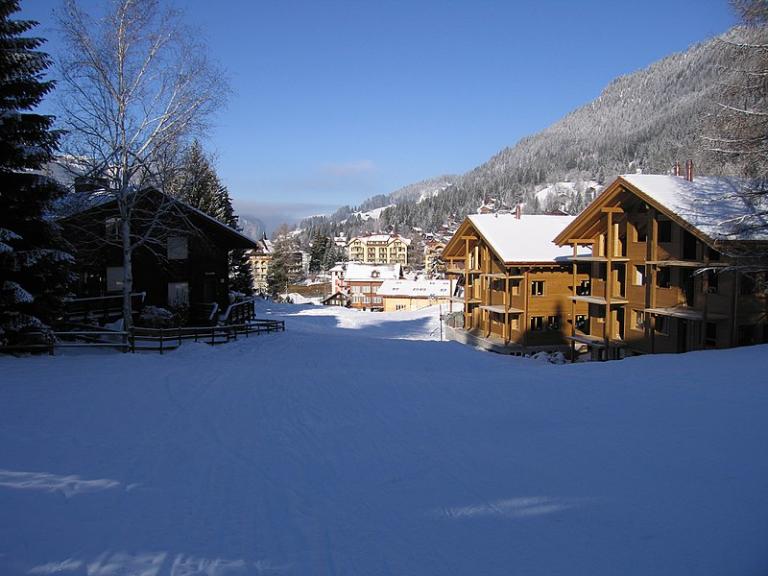
Although I grew up in southern California and have spent considerable time over the years in Israel or Palestine (to say nothing of Egypt), my “Christmas sensibility” is curiously Alpine. We’ll soon, I hope, be having our traditional seasonal meals of Raclette and of Bratwurst, of Wienerschnitzel and Spätzle, of Rotkohl, and Kartoffelsalat, and, of course, of Käsefondue.
Finally, the Christopher Hitchens Memorial “How Religion Poisons Everything” File© was created to chronicle at least a small portion of the horrors to which decent people are routinely subjected by theism and theists. Here is just one example of those abominable horrors:
“Finding the light: The science behind spirituality as an antidepressant”
“It’s incontrovertible that a teenager with a strong spiritual core has an 80 percent decreased risk of addiction. … So for a teen without a strong spiritual core, an 80 percent increased risk. . . . We find young people are two-thirds less likely to become depressed, 82 percent less likely to take their life when they have a strong spirituality that is shared. We know that a strong relational spiritual life that is shared is more protective than any pill, than any therapy, than any program.”
“The report says that studies that examine religion’s impact often underestimate the full benefits of faith and how it’s practice. . . . The report acknowledges that attendance at religious services provides benefits. But those who also have faith-centered practices at home, like reading scriptures or family prayer, find life more meaningful and have both better relationships and better mental health. Religion offers them more. . . . The report, based on an analysis of data from 16,000 people in 11 countries, suggests that using regular religious service attendance as the only metric for religious practice underestimates the benefits of religion by about 25% on average — and by up to 50% depending on the outcome being examined. The benefits of faith practices and attendance together are more robust and varied.”
Plainly, theism imposes enormous costs upon its victims — and not only on direct casualties but, presumably, among those who might be considered collateral damage.
And this article was found in the immediate vicinity of the Hitchens File©: “Not everything is lost: The powerful, societal force of charitable giving,” by Sharon Eubank






